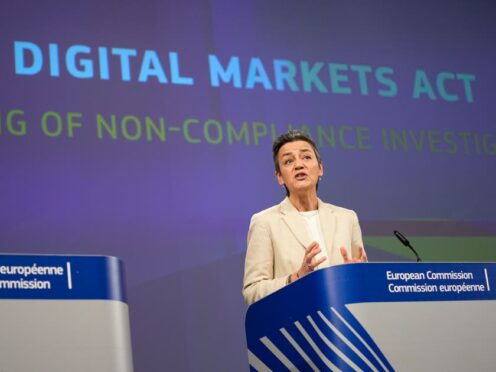
European Union regulators accused social media company Meta Platforms on Monday of breaching the bloc’s new digital competition rulebook by forcing Facebook and Instagram users to choose between seeing ads or paying to avoid them.
Meta has been giving European users the option since November of paying for ad-free versions of Facebook and Instagram as a way of complying with strict data privacy rules.
Desktop browser users can pay about 10 euros (£8.50) a month while iOS or Android users will pay roughly 13 euros (£11) to avoid being targeted by ads based on their personal data.
The US tech giant rolled out the subscription option after the European Union’s top court ruled that under strict EU data privacy rules, Meta must first get consent before showing ads to users.
The #DMA is here to give back 🇪🇺 users the power to decide over their #data#Meta has forced millions of users across EU into a binary choice : “pay or consent”.
In our preliminary conclusion this is a breach of the DMA.
Today we take an important step to ensure Meta complies. pic.twitter.com/lGXagHuq7J
— Thierry Breton (@ThierryBreton) July 1, 2024
The European Commission, the EU’s executive arm, said preliminary findings of its investigation show that Meta’s “pay or consent” advertising model was in breach of the 27-nation bloc’s Digital Markets Act.
The commission said Meta’s model does not allow users to exercise their right to “freely consent” to allow their personal data to be used to target them with online ads.
The commission had opened its investigation shortly after the rule, also known as the DMA, took effect in March.
It is a sweeping set of regulations aimed at preventing tech “gatekeepers” from cornering digital markets under threat of heavy financial penalties.
“The DMA is there to give back to the users the power to decide how their data is used and ensure innovative companies can compete on equal footing with tech giants on data access,” European commissioner Thierry Breton, who oversees the bloc’s digital policy, said in a statement.
Meta now has a chance to respond to the commission, which must wrap up its investigation by March 2025. The company could face fines worth 10% of its annual global revenues, which could run to billions of euros.
“Subscription for no ads follows the direction of the highest court in Europe and complies with the DMA,” Meta said in a statement.
“We look forward to further constructive dialogue with the European Commission to bring this investigation to a close.”
Under the Digital Markets Act, Meta is classed as one of seven online gatekeepers while Facebook, Instagram and its ad business are among about two dozen “core platform services” that need the highest level of scrutiny.

Enjoy the convenience of having The Sunday Post delivered as a digital ePaper straight to your smartphone, tablet or computer.
Subscribe for only £5.49 a month and enjoy all the benefits of the printed paper as a digital replica.
Subscribe